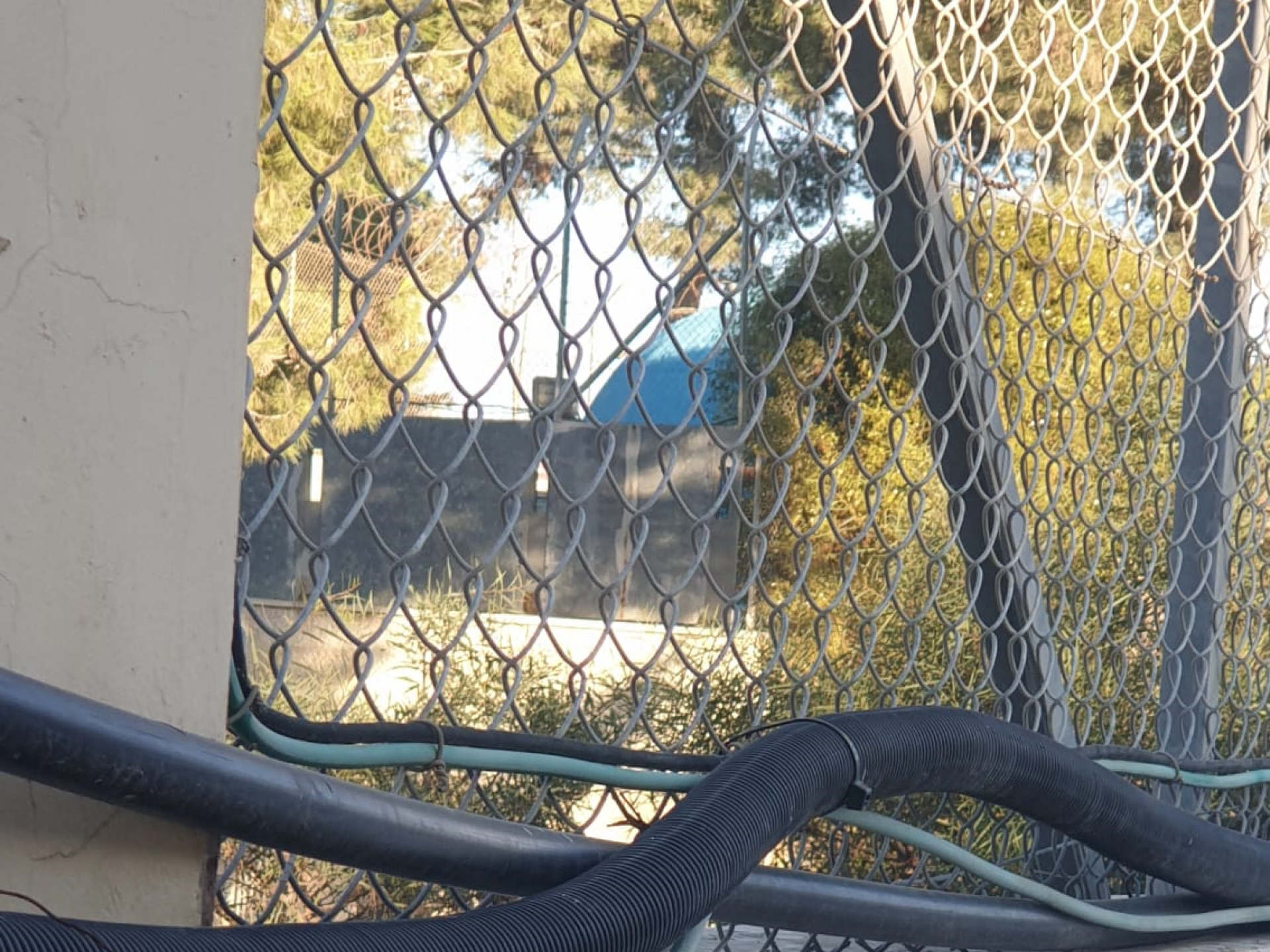Rachel’s Tomb – where is the famous cupola?
Checkpoint 300, Shuvu Banim, a settlement in the Rachel's Tomb complex, Sawahira ash-Sharqiya
Checkpoint 300: Upon exiting the checkpoint, there are many workers rushing to work. The fact that more work permits are issued is definitely noticeable. Most of the passers-by are men, but the relatively few women passers-by smile and greet us - if only with a quick glance. Every shift we wonder how we all got used to the procedures of passing through the checkpoints - as if it is a "part" of our lives. The violence in the actual transit procedures, which is the daily bread and butter of thousands of people, is accepted by everyone as a matter of course? Just improve the behavior and everything is benign? 55 years of occupation hit our senses? The faces of the passers-by tell the story more than a thousand words!
The welcome that awaited us was really "hearty". The spirit of the new times - the times of Ben Gvir and Smotritch, are already felt. Immediately, but very immediately we were required to move here and there - neither here nor there - everything depends on who was screaming - a policeman or a soldier. The hatred towards us succeeded in uniting all the uniform wearers - the dangerous traitors have arrived. When we tried to take pictures, we were attacked with all possible bureaucratic force. The police said we are "not allowed to take pictures". We said "it's a public space – it is allowed". They shouted "remove the picture from the phone". We ask "why? We only photographed the passers-by and not the soldiers". A "huge" police officer approached the camera , his whole being radiated menace and with no choice we let him delete the photo. We continued to stand and watch. A man dressed in a galabiya appeared with his family and again we took pictures - the family. A soldier who was standing in the area started shouting and cursing – such language that even the paper cannot tolerate. We tried to avoid a useless confrontation.
, his whole being radiated menace and with no choice we let him delete the photo. We continued to stand and watch. A man dressed in a galabiya appeared with his family and again we took pictures - the family. A soldier who was standing in the area started shouting and cursing – such language that even the paper cannot tolerate. We tried to avoid a useless confrontation.
"Shuvu Banim" settlement in Rachel’s Tomb: We visit this settlement from time to time. It is located right behind the building where the tomb is located. The place has expanded but is very neglected. All sorts of rubbish everywhere. On the wall that separates the settlement from Bethlehem, we saw marked parking spaces for the local settlers. We saw something similar in Kufr Aqab - both Palestinians and Israelis adapt to the circumstances. We asked the hospitable settler if we could go up to the roof of the building and from there see the dome of Rachel's Tomb. He sent us to a flight of stairs that he thought would lead us to the roof of the building. We couldn't get to the roof from these stairs, but we saw the filth that was lying around there . We decided to try other stairs, also without success. Finally we met a hospitable settler who suggested that we go to his house, and tell his wife that "Noam said to let us take a peek from the children's room window". Unfortunately his wife was not at home and we will have to postpone the matter until the next visit.
Sawahira ash-Sharqiya: This barrier is a "list barrier". Sawahra al-Sharqiya is a Palestinian village/neighborhood located southeast of Jerusalem. In the past, Sawahra a-Sharqiya relied on infrastructures including a school and clinics of the nearby villages of Sheikh Sa’ed and Jabal Mukabar. Today, the wall cuts between them and thus the residents of Sawahira ash-Sharqiya remain cut off from their families, their workplaces and the services that remain beyond the wall. At the same time, a series of arbitrary and cruel restrictions were imposed on the inhabitants of the villages. The list barrier is a prominent example of this - who will take the short and easy way and who will climb beyond the mountains of darkness. Who on foot and who by car, and who are family members. It takes a confused teacher to decipher these instructions.
We got into a conversation with one of the passers-by who pointed out with a sarcastic smile that in order to pass through this checkpoint you need two cars: one to bring you from Jerusalem to the Israeli side and another to pick you up on the Palestinian side. The entrance to the checkpoint is on a path with a fence on both sides. Even those who are allowed to pass by car must get out of it, climb up the hill, talk to the soldiers, return to the car and wait for the gate to open. There is indeed an internet box at the entrance to the pedestrian crossing - but like all the buttons and the internet at all the checkpoints - it is of course not working. The unlucky ones who don't appear on the lists must go through the central checkpoints in the area. It's a situation where you "scratch the right ear with the left hand". Another one of the "wonders of the occupation". The manner in which the transit permits are given on the spot arouses thoughts and suspicions.
Five minutes drive and we are in the world of the rights holders - the occupiers. The festival of lights is all around and the celebrants are not bothered by the suffering of their neighbors at all.

